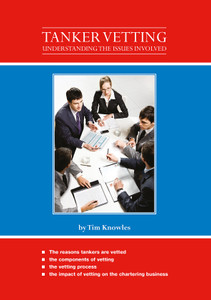
This book is a guide to the work conducted by marine Classification Societies, their purpose, regulations and the types of surveys carried out. It concentrates particularly on Class Society rules and regulations for the building and continued operations of merchant ships, yachts, offshore platforms and special service crafts (including military vessels).
This publication is a comprehensive introduction to marine Classification Societies. It first covers the history of Class Societies and their current role in the maritime industry, looking at key definitions and examples of terminology, and outlining the important differences between the role of classification societies and statutory authorities. The majority of the book is then devoted to rules and regulations for the building and continued operations of merchant ships, yachts, offshore platforms and special service crafts (including military vessels).
This book provides an insight into the work conducted by Marine Classification Societies, their purpose, regulation and the types of surveys carried out.
There are many Class Societies operating throughout the world and they all have common standards. Discussion of their operation, interpretation and professionalism are not part of this book, neither are the economic and financial influences involved in choosing one society in preference to another.
The majority of the information in this book concerns the Class Societies’ rules and regulations for the building and continued operation of merchant ships, yachts, offshore platforms and special service craft (including military vessels), and their work carried out in marine related industries.
References are provided at the end of the book to help the reader with any background information for further reading and research.
To quote from Lloyd’s Register’s Rules as an explanatory note:
"Ship classification may be regarded as the development and worldwide implementation of published Rules and Regulations which, in conjunction with proper care and conduct on the part of the Owner and operator, will provide for:
1. The structural strength of (and where necessary the watertight integrity of) all essential parts of the hull and its appendages;
2. the safety and reliability of the propulsion and steering; and
3. the effectiveness of those other features and auxiliary systems which have been built into the ship in order to establish and maintain basic conditions onboard whereby appropriate cargoes and personnel can be safely carried whilst the ship is at sea, at anchor, or moored in harbour....."
Foreword
Introduction
Acknowledgements
1.?History?of?Ship?Classification?Societies
2.?International
Association
of
Classification
Societies
(IACS)
3.?General?rules?and?definitions
4.?The?role?of?a?Society
5.?Ship?Registries
6.?Classification?related?activities
7.?Interaction?with?other?organisations
8.?Class?surveys
9.?Hull?construction?and?equipment
10.?Machinery?installations
11.?Electrical?installations
12.?Materials
13.?Vessel?equipment
14.?Fire?protection,
detection
and
extinction
15.?Intact?Stability
16.?Load?lines
17.?Assignment?of?Freeboard
18.?Statutory?Certification
19.?Quality?system?certification
20.?The?International?Safety?Management?Code
21.?Technical?services
22.?Emergency?technical?assistance?services
23.?Other?business?areas
24.?Classification?Society?Publications
25.?Conclusion
References
Peter Broad (CEng, MIMarEST, Fellow of the MIIMS) is a Chief Engineer experienced in ship operations, superintendency, ship repair, marine insurance claims and litigation, ship new building project management and classification society surveying. He is also a technical training provider and the author of several technical publications.
- Number of Pages:
- 124
- ISBN:
- 9781856093149
- Published Date:
- April 2009
- Binding Format:
- Paperback
- Book Height:
- 240 mm
- Book Width:
- 180 mm
- Weight:
- 0.6 kg
- Author:
Peter Broad
- Preview:
- Yes






